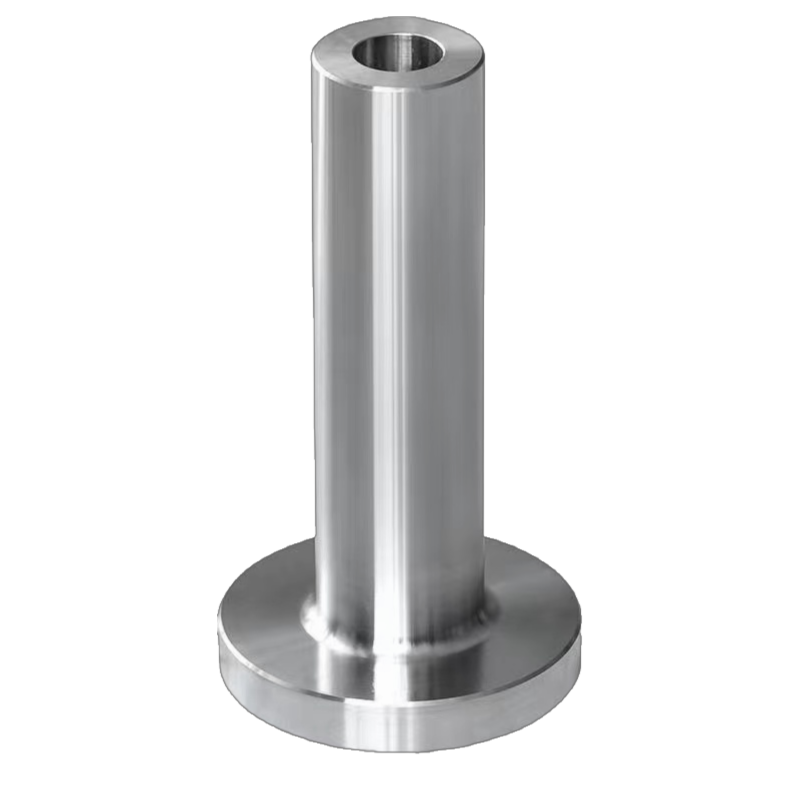Description
Function of Tubesheet in Flanges:
- Tube Support: The tubes are inserted into the holes of the tubesheet, which is secured within the flange. This support ensures the tubes remain in place, even under high pressure and temperature conditions.
- Sealing: Tubesheets, when installed within the flange, maintain the integrity of the seal between the fluid inside the tubes and the external fluid surrounding the tube. This ensures there is no mixing or leakage of fluids.
- Flow Isolation: Tubesheets help direct the flow of different fluids through the tubes and prevent cross-contamination or mixing of fluids from different streams.
Structure of Tubesheet in Flanges:
- Tubesheets are typically flat plates made from materials such as carbon steel, stainless steel, alloy steel, or nickel alloys. The number and size of the holes drilled in the tubesheet depend on the design and requirements of the system.
- The flange serves as the connection point between the tubesheet and the external shell or vessel, ensuring that the entire structure is securely fastened.
Applications of Tubesheets in Flanges:
- Heat Exchangers: In shell-and-tube heat exchangers, tubesheets are used to hold the tubes in place and separate the hot and cold fluids. They are crucial for maintaining fluid flow and preventing leaks between the shell and the tubes.
- Boilers and Reactors: Tubesheets are used to fix the tubes within the pressure vessel or reactor, facilitating the necessary flow of steam or chemical reactions while ensuring the integrity of the system.
- Pressure Vessels: Tubesheets are often found in pressure vessels, where they separate the internal fluids from the external environment.
Material Selection:
The materials for both tubesheets and flanges must withstand high temperatures, pressure, and, in some cases, corrosive environments. Common materials include:
- Carbon Steel: Used for standard applications with lower cost and good strength.
- Stainless Steel: Ideal for applications requiring corrosion resistance, especially in chemical processing.
- Alloy Steel: Used for systems requiring higher strength and better resistance to wear and heat.
- Nickel Alloys: Preferred for extremely high temperatures and aggressive chemical environments.
Design Considerations:
When designing tubesheets for flanges, several factors must be considered:
- Pressure Resistance: The tubesheet must be able to handle the internal and external pressures without failure.
- Thermal Expansion: Tubesheets and flanges must be designed to accommodate the thermal expansion that occurs during operation.
- Sealing: Proper sealing designs are essential to prevent leakage between the tubes and the shell.
Tubesheet and Flange Integration:
- Installation: The tubesheet is typically welded or bolted to the flange, depending on the application and system requirements. The flange provides the necessary strength and sealing surface, while the tubesheet holds the tubes in place and ensures fluid flow direction is maintained.
- Sealing Function: The combination of the flange and tubesheet provides a robust seal to prevent fluid leakage, ensuring that the system operates efficiently without cross-contamination between fluid streams.
Advantages of Using Tubesheet in Flanges:
- Strong Structural Support: Tubesheets provide a solid foundation for the tubes, ensuring that they stay securely in place.
- Efficient Fluid Separation: Tubesheets prevent the mixing of different fluids, allowing for efficient heat exchange and preventing cross-contamination.
- Simplified Maintenance: Tubesheet installations in flanges facilitate easy access for maintenance, repairs, and replacements, especially in large-scale industrial systems.





